Reliable vegetable varieties
Everything you grow needs care and attention. However, some food plants are less fussy and give
more value for your efforts than others.
What grows well in one person's backyard may not do so well on someone else's property, so it is
worth experimenting with different varieties to see what does well for you. Comparing notes with
neighbours and looking at what grows in the neighbourhood are good ways to find out what thrives
in your area. The plants mentioned on these pages do well in an eastern suburbs garden in
Melbourne.
The following are varieties of commonly grown vegetables that do well in Melbourne's eastern
suburbs. Other varieties may do better in other areas: experiment to find out what works best for you.
Good, rich soil and adequate water will go a long way towards good results with your vegies. Always
mulch well over summer.
Seed companies like Diggers (Link) and New Gippsland Seeds (Link) have a huge range of fruit and
vegetables to experiment with.
Beans
Climbing beans are more space efficient that
bush beans. Sow in late spring for the main
crop, then again in late January and,
depending on the weather, you may have
fresh beans until June. Old screen doors with
the fly mesh removed make good climbing
frames for beans. Check the hard rubbish for
these.
Good varieties to try: Purple King, Lazy
Housewife, Golden Pole Bean
Broccoli
'Sprouting' or 'browsing' varieties give months
of picking with small sprigs rather than one
large head. Two well grown plants should be
plenty for a family. Grow over the cooler moths
if you want to avoid having to control cabbage
white butterfly. Otherwise use 'Dipel'
fortnightly. (This is registered for use on
organic produce.)
Try Diggers Seeds for sprouting varieties of
broccoli.
Cabbage
Cabbages look wonderful in the garden - like
great big green roses.
They will grow better for you if you grow from
seed rather than punnets or pots. Sow small
numbers, staggered over a number of weeks
or months so you don't have barrow loads of
cabbages all ready for eating at the one time!
Try: Green Coronet (Hybrid) from New Gippsland
Seeds. This variety resists bolting to seed so
you don't have to pick all your cabbages at
once.
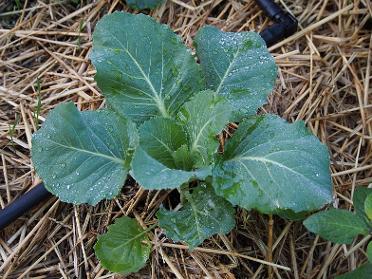
Cucumbers
The crispness of fresh picked cucumbers is
one of the joys of summer and once you
tasted your own you'll be reluctant to ever buy
the commercial ones again. Especially since
they are so easy to grow.
Lebanese cucumbers are very prolific. Make a
frame to keep them off the ground. A length of
sturdy wire mesh bent to make an arch works
well. Plant your seedlings at the edge of the
garden bed and train them over the arch
above the adjoining lawn or path.
Also try: Armenian cucumber (From Diggers or
New Gippsland Seeds) These have long, pale
fruit which keep well in the fridge. They may
not do well in cool summers however.
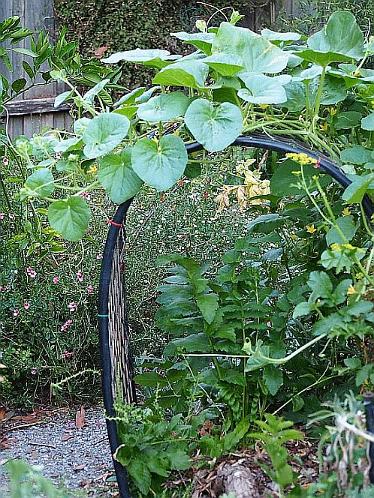
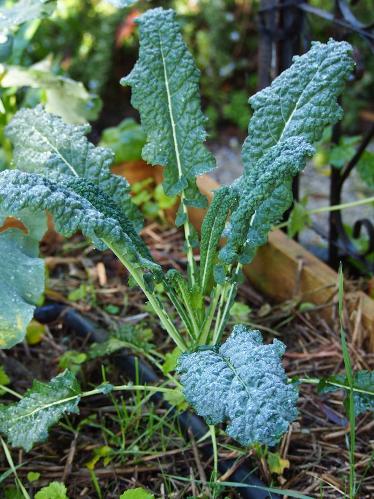
Kale
Just one of the latest in a string of fad foods?
Well, not really. Kale has been around for
squillions of years. It's just not been a
common food plant till recently in Australia.
It's a kind of loose-leafed cabbage. And it is
nutritious, being rich in iron, vitamins and
antioxidants.
The variety shown here is Tuscan Black Kale
or Cavolo Nero. It is easy to grow and does
well in Melbourne.
Its beautiful, crinkled, blue-green leaves
make quite a statement in the garden, and it
goes on and on producing leaves month after
month, growing taller as it does.
Harvest the leaves you need as you need
them and leave the plant to grow on.
Use Kale in stir fries, soups, coleslaw.
Brushing with olive oil and baking until just
crisp is another favourite.
As for cabbages and broccoli, cabbage white butterflies can cause problems in the warmer months, so
hand picking caterpillars or spraying with Dipel may be necessary.
When flower buds will appear you can let them mature and form seeds for your next crops.
However, if you have other brassicas growing they are likely to cross pollinate with your kale. You could
find yourself with kadishes, kallage, kalcoli or kastards. You may be lucky and find yourself with a
brilliant new hybrid, but most likely it will be best fed to the caterpillars or the chooks.
You could instead pick the flower buds and eat them. Steam them lightly, pop them into stir fries or
soups. Treat them like broccoli. They are delicious!
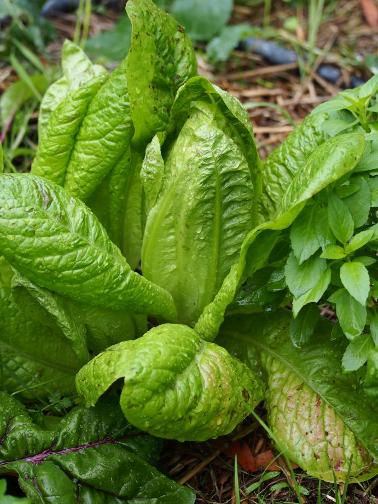
Lettuce
Loose leaf varieties can be grown all year. Let
some go to seed and you will have a constant
supply of new plants. Pick leaves as you need
them, leaving some on the plant to keep it
growing. Hearting lettuces are more difficult,
being prone to rotting and reluctant to 'heart'.
There are many varieties, and their different
colours (reddish, bright green, golden-green,
speckled) and leaf form (long, rounded, oak
leaf, frilly) look very attractive in the garden.
The small Red Cos variety does better than
many others in hot weather.
If buying seedlings choose a punnet with small
plants - these will do better than more
advanced ones.
Peas
Picked fresh from the garden is the best way
to eat peas! Grow from seed rather than
buying seedlings. Soaking in warm water for a
few hours will improve germination rate.
Alternatively, get them started in a take away
food box on damp paper towel. Place the lid
loosely on top and keep moist but not
puddley. When small roots and shoots
appear, plant into pots or into the garden (but
watch out for snails and slugs).
Try Climbing Sugar Snap or Snow Peas (why
bother podding peas if you can eat the lot?).
As for beans, climbing varieties are more
space efficient.
Tomatoes
The following varieties are all particularly tasty
and prolific: Brown Berry (cherry type),
Pomodoro Crovarese (Italian variety, small
elongated fruit), Reggae Roma (egg shape and
size), Periform (large, solid fruit). Black
Russian fruits early, is tasty, and does okay in
cool summers.
Try planting a few advanced seedlings into the
garden bed in September. Plant deeply -
halfway up the stem - and to get them growing
quickly, make a protective shelter from clear
plastic. If all goes well you'll have well
established plants by the time the weather
warms up, and early tomatoes to pick. Plant the
remainder of your crop in November.
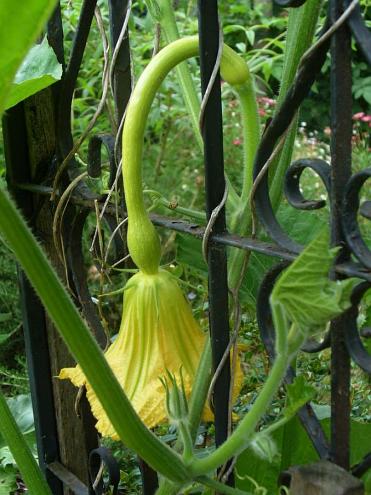
Zucchini
It is good to be adventurous with zucchinis.
Italian varieties such as Costata are especially
tasty and attractive. Round varieties such as
Zucchini Rondo taste just as good if not better
than the standard long types, but the bushes
are more compact which can be useful.
Tromboncino zucchinis (pictured at left) grow
very long indeed. Provide a sturdy climbing
frame for these ones.
If you don't have many bees visiting your
garden you may have to hand pollinate.